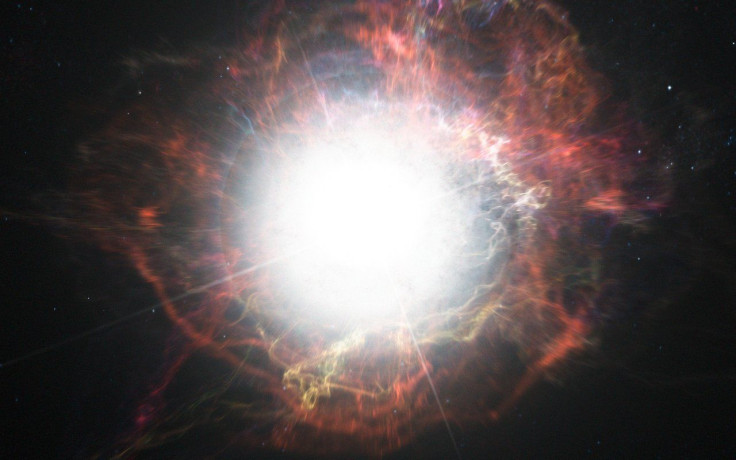Zombie Star: Scientists Say Supernova Explosion Was Star's Second Death

A star that appeared to die in a supernova explosion a long time ago came back from the dead and blew up again, according to the scientists who observed that second fiery death.
This star would be the first astronomers have ever seen come back to life like a zombie. Supernovas are believed to occur when stars reach the end of their lives — the most common type involves a massive one collapsing under its own weight and blowing up. There are also supernovas in which a star sucks up material from one of its stellar neighbors until it gets too large and explodes. But in these cases, it is believed that the star has died, and the dense core called a neutron star that the big bang leaves behind is like the corpse of the once-shining star.
But one team came across a weird phenomenon after witnessing a star explode a few years ago. When they investigated the supernova and its placement in the sky, they found that another possible explosion had occurred in the same spot in 1954.
“Every supernova so far observed has been considered to be the terminal explosion of a star,” according to their study in the journal Nature. But current theories do not explain this event. “Another mechanism for the violent ejection of mass in massive stars may be required.”
The scientists were prompted to look deeper when the 2014 explosion presented itself like a supernova that stemmed from a star’s hydrogen-rich core collapsing — giving off light in the same way others of this kind have done — but showed other “characteristics that differ extensively from those of known supernovas.”
“Everything about the discovery seemed normal,” the Carnegie Institution for Science said in a statement. “Until, that is, a few months later when the supernova started getting brighter again.”
That brightness lasted for six times longer than what astronomers would normally observe; it went through periods of dimming and brightening over a couple of years. More investigation, and the finding that this spot in the sky had previously exploded more than 60 years ago, suggested the star had somehow survived its earlier supernova to explode another day.
“This supernova breaks everything we thought we knew about how they work,” lead study author Iair Arcavi said in the statement.
According to the Carnegie Institution, understanding supernovas is important for understanding how the matter in our universe formed: “A supernova explosion may even have triggered the formation of our own solar system.”
Although it is the first report of a second explosion, this isn’t the first time scientists have suggested that a star somehow survived its supernova. Earlier this year, a team of astronomers reported finding a quickly moving, low-mass object that they believed was left over from one of these explosive events and proposed adding a new category of supernova that would include these survivors. That group said the object was created after a white dwarf blew up but was not entirely destroyed, and the energy of the explosion sent its remains racing through space.
© Copyright IBTimes 2024. All rights reserved.





















